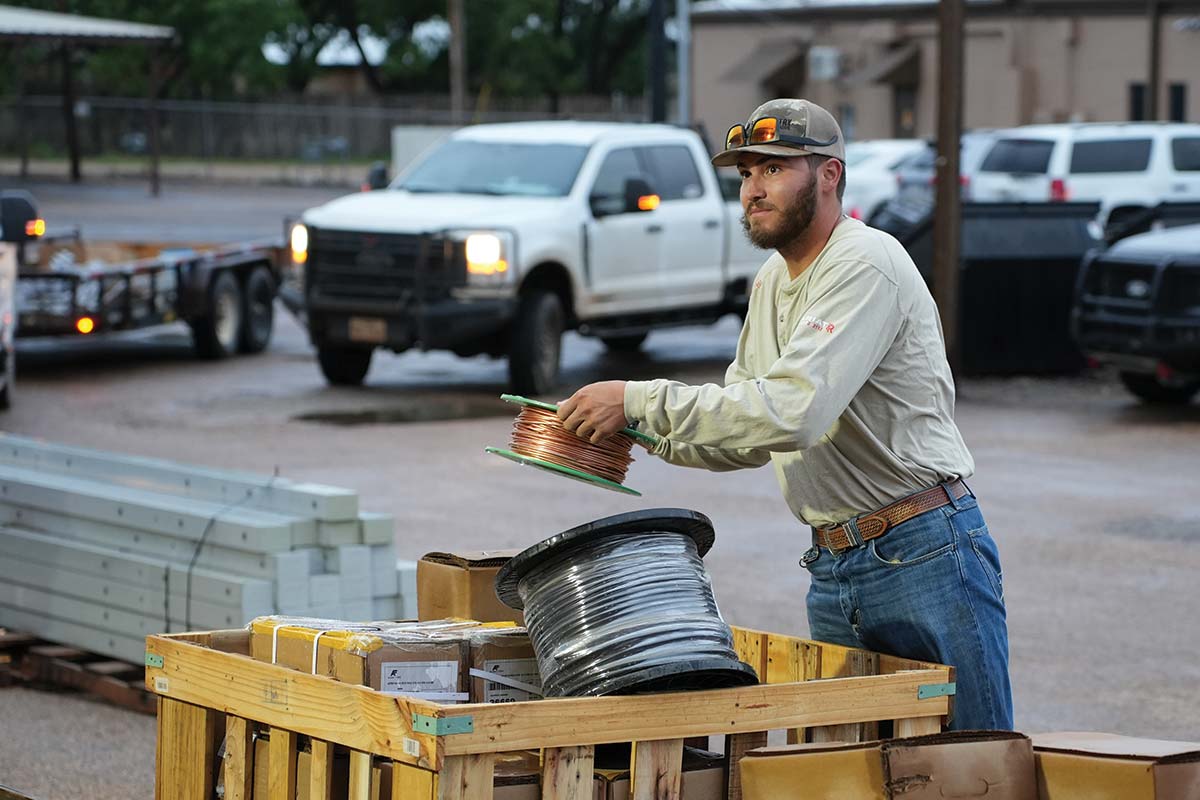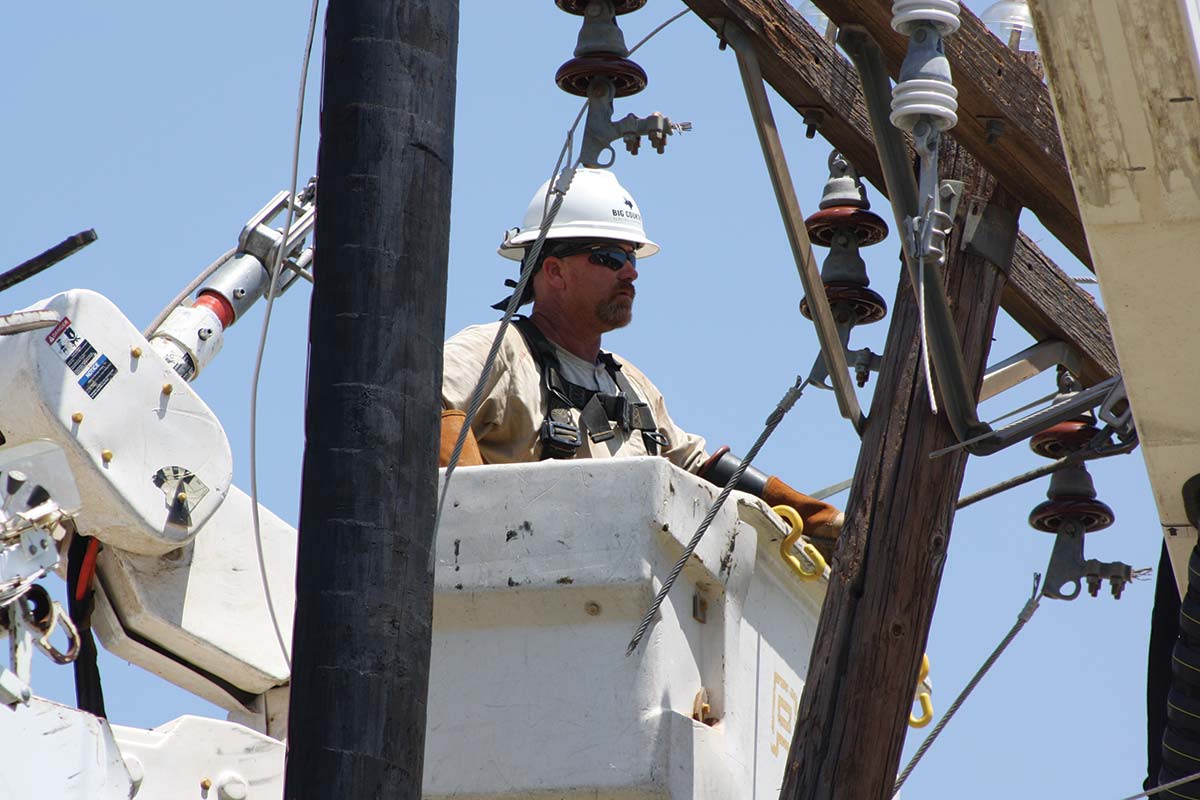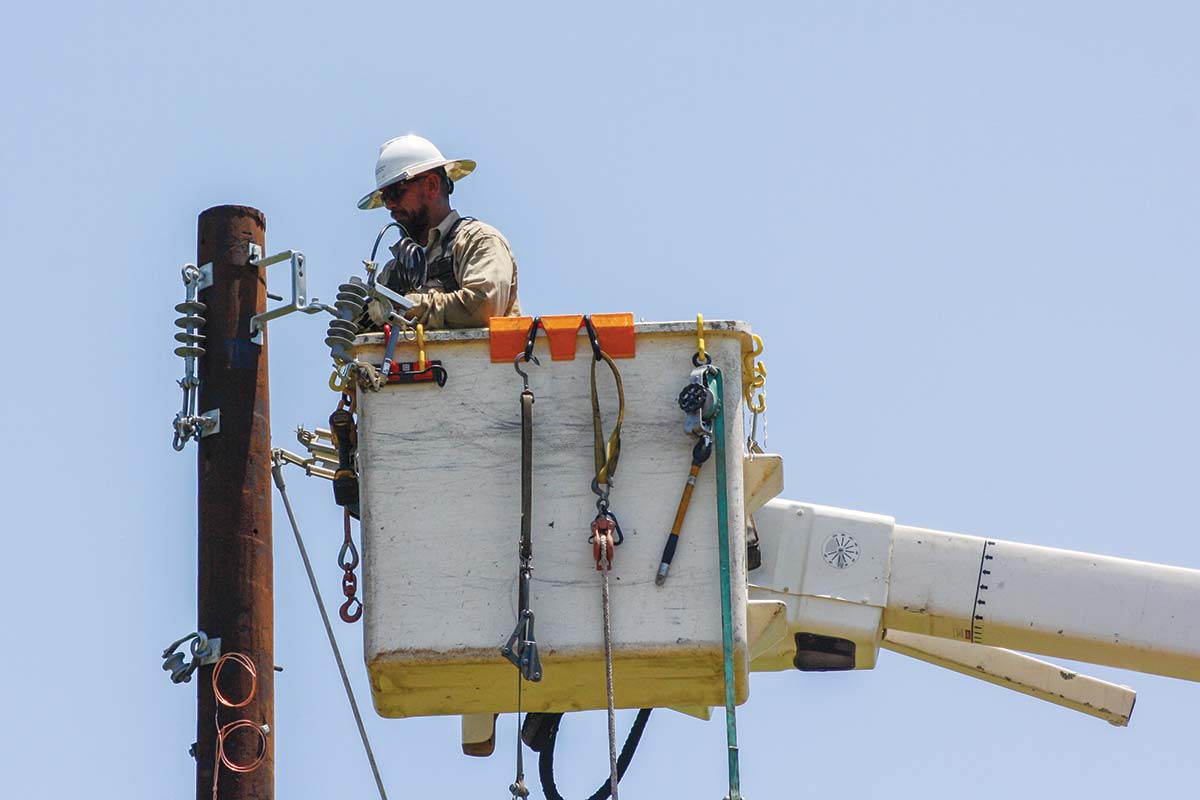We’re no strangers to high winds around here—but that doesn’t make it any easier when they blow through with force.
Nearly two years to the day after a tornado hit Fisher County, another powerful storm rolled in June 8, taking down some of the very same poles Big Country Electric Cooperative replaced in 2023. Straight-line winds during the storm were reported between 80 and 105 mph—powerful enough to snap poles, uproot barns and sheds, and cause widespread damage. Most areas received around 4 inches of rain during the initial storm, followed by a couple more inches over the next few days.
Before that, our Stamford service district had already been hit hard by a series of smaller, yet damaging storms. Over just a few short weeks, multiple rounds of high winds and heavy rain knocked out power and took down poles in several areas. While the June 8 storm was the most widespread, it certainly wasn’t the first challenge our crews—especially in Stamford—had already tackled this storm season.
The damage from the June 8 storm was extensive. In total, 173 poles were downed in our Roby service district, with another 19 in the Stamford area.
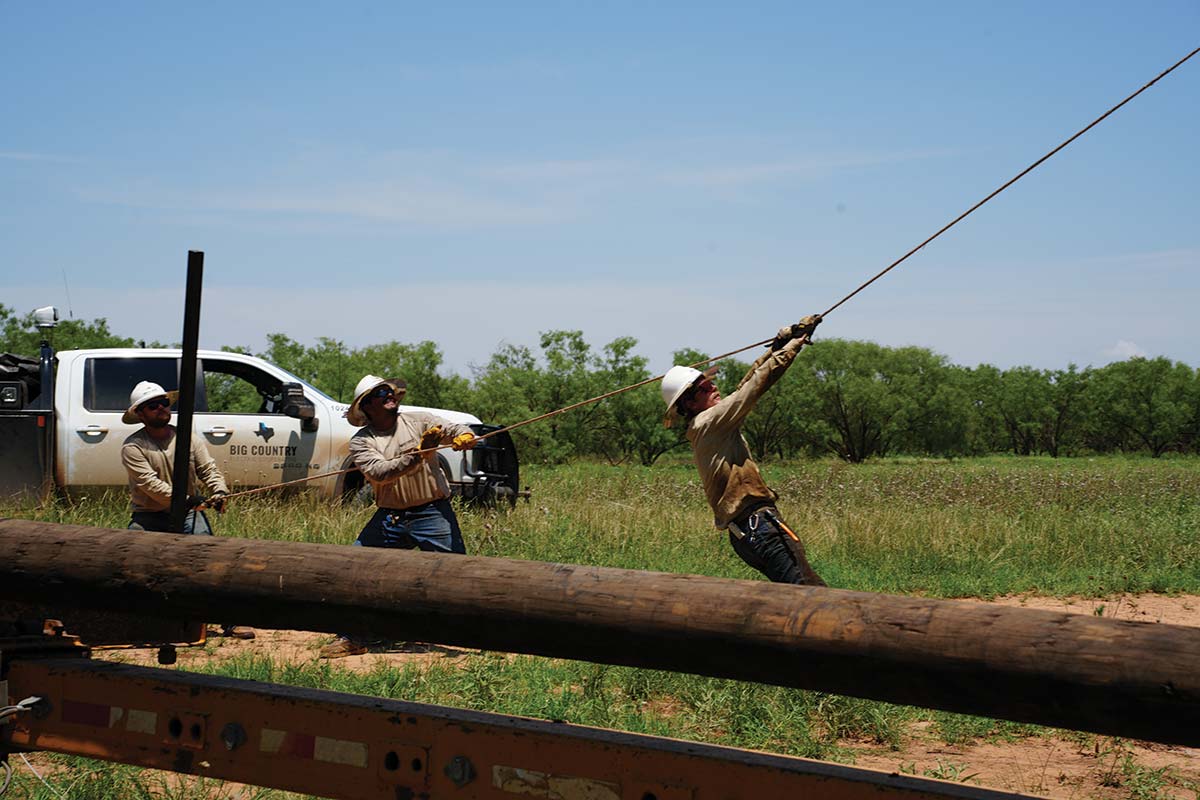
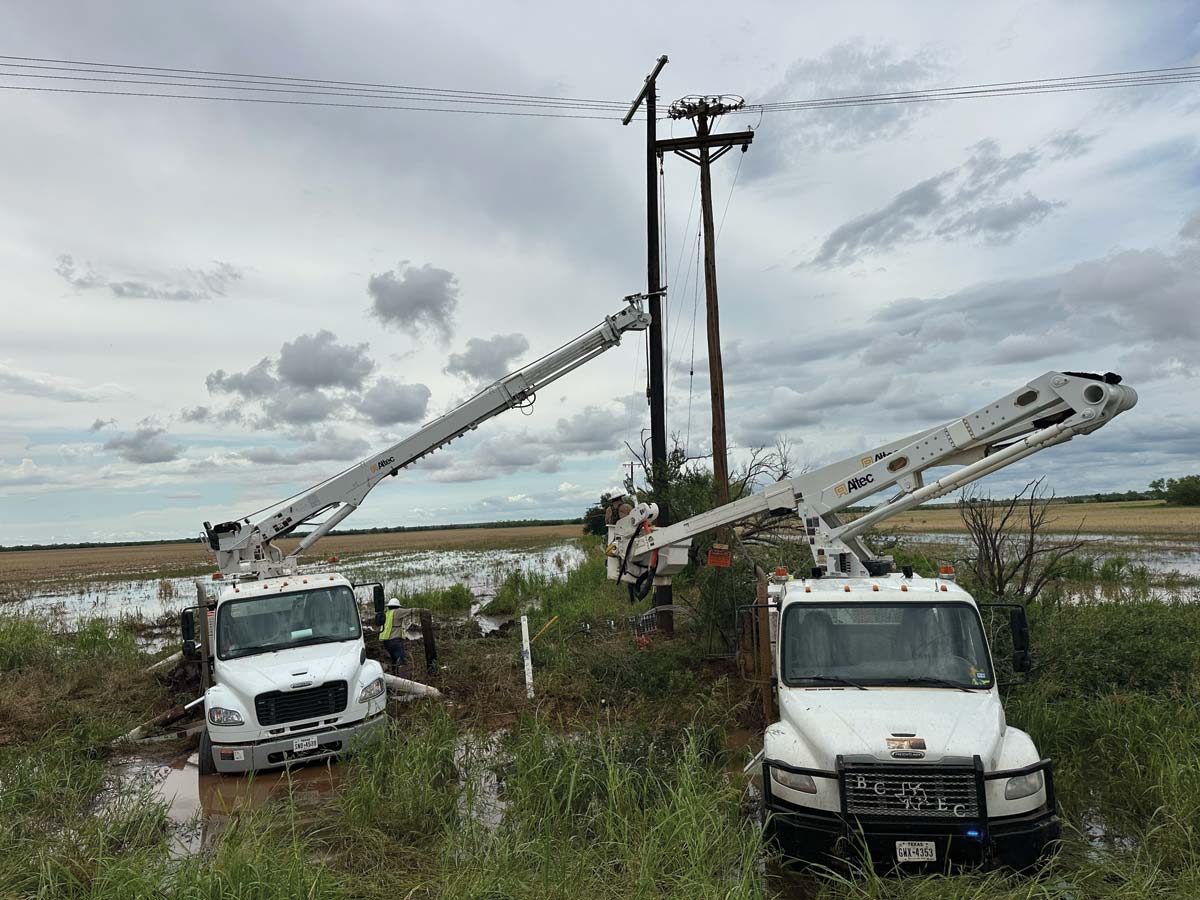
Transmission providers were also heavily impacted: American Electric Power lost around 76 poles, including 40 transmission structures, and Oncor lost many poles as well.
At the peak of the storm’s aftermath (Monday morning around 7:30 a.m.), about 2,766 BCEC meters were without power. Thanks to rerouting and quick action, that number dropped to 1,700 by lunchtime, but it quickly became clear that the damage was widespread and severe.
That’s when we made the call to activate our Emergency Operations Plan. When we enter EOP mode, it’s all hands on deck.
BCEC lineworkers normally follow a set schedule: they stop at 6 p.m. and resume at 6 a.m. On that first day, many had already been working nonstop since the storm hit Sunday night. And while lineworkers hate walking away from an unfinished job, rest is critical to ensure safety and stamina during extended restoration efforts.
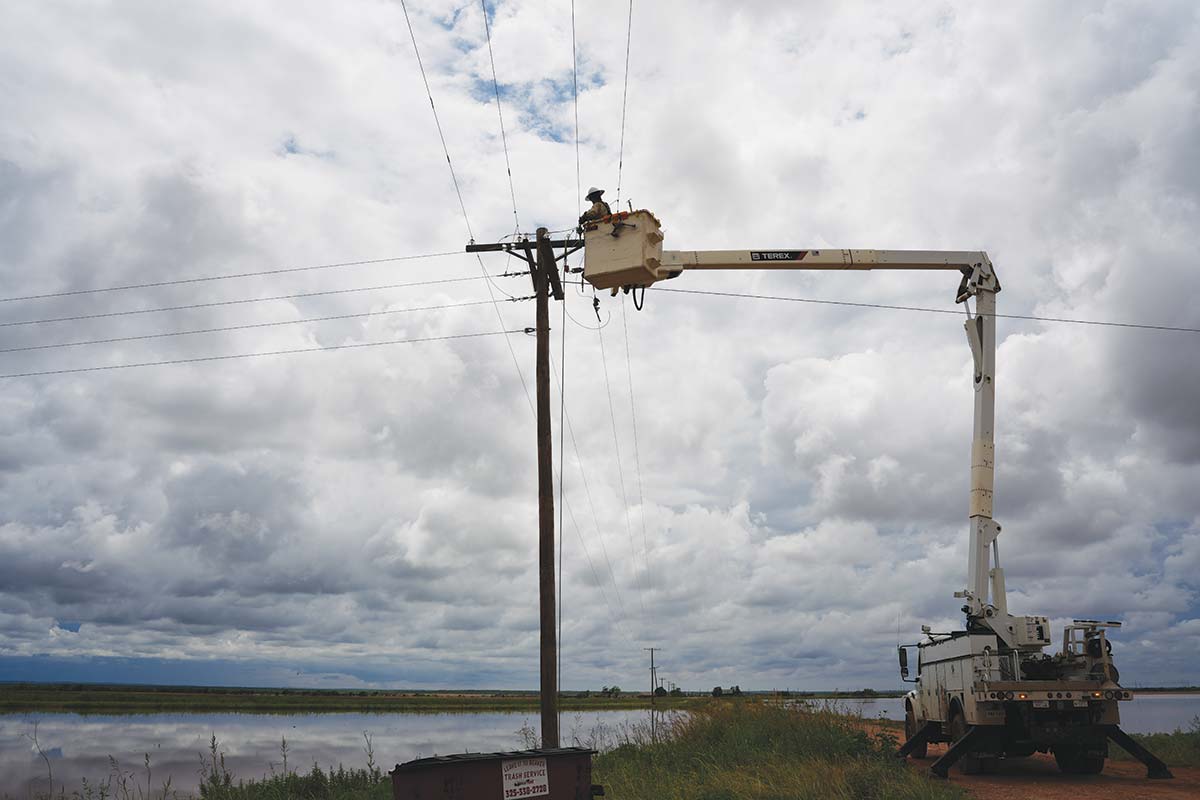
On Monday, in addition to our line crews, our engineering team, staking technicians, meter technicians and even our safety manager joined the effort to patrol and assess damage.
With more than 5,400 miles of distribution line across BCEC’s territory, identifying every downed pole, broken cross arm or damaged wire is no small task (thankfully, we didn’t have to patrol all of it!). That’s why your outage reports through SmartHub or by phone are so helpful—allowing us to pinpoint problems faster and prioritize restoration efforts.
Restoring Power, One Piece at a Time
Restoration after a major storm is like putting together a massive, high-stakes puzzle. One damaged section might prevent power from reaching an entire area, and sometimes fixing one issue reveals another further down the line. Crews may even need to de-energize portions of the system that appear intact to safely make repairs.
Thorough assessment gives our engineers and operations team a big-picture view: What needs to be fixed first to bring the most members online? Which repairs rely on other sections being restored first? What areas are accessible—and which require dozers or other equipment to get through mud and floodwater? The mud, by the way, was relentless.
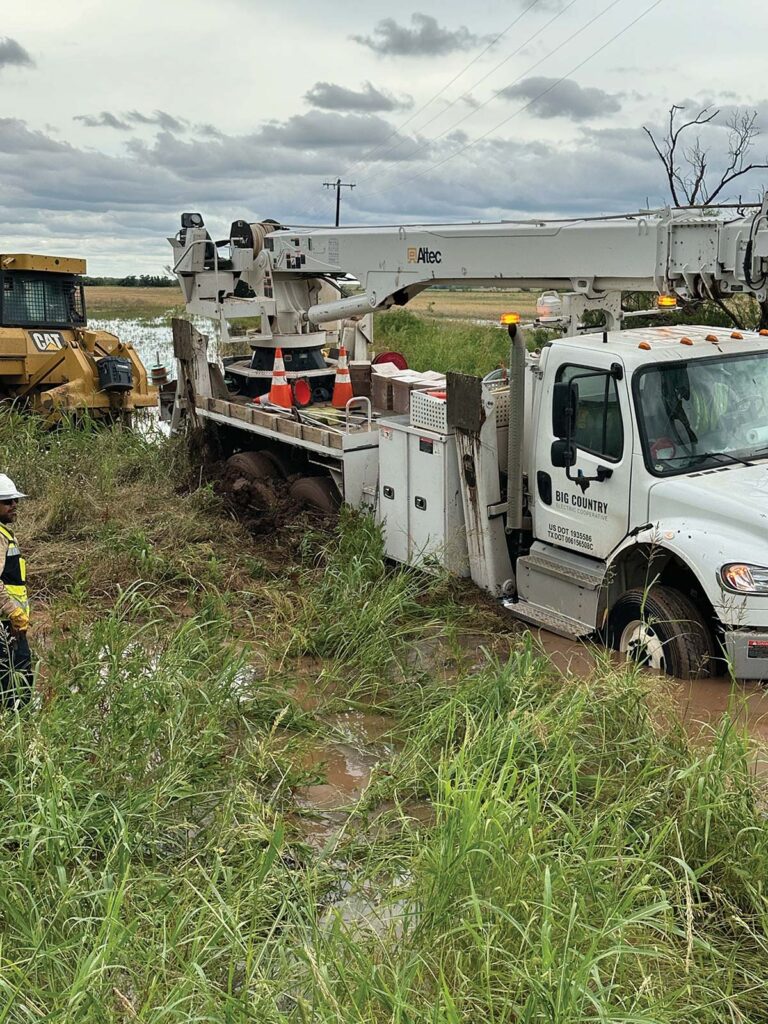
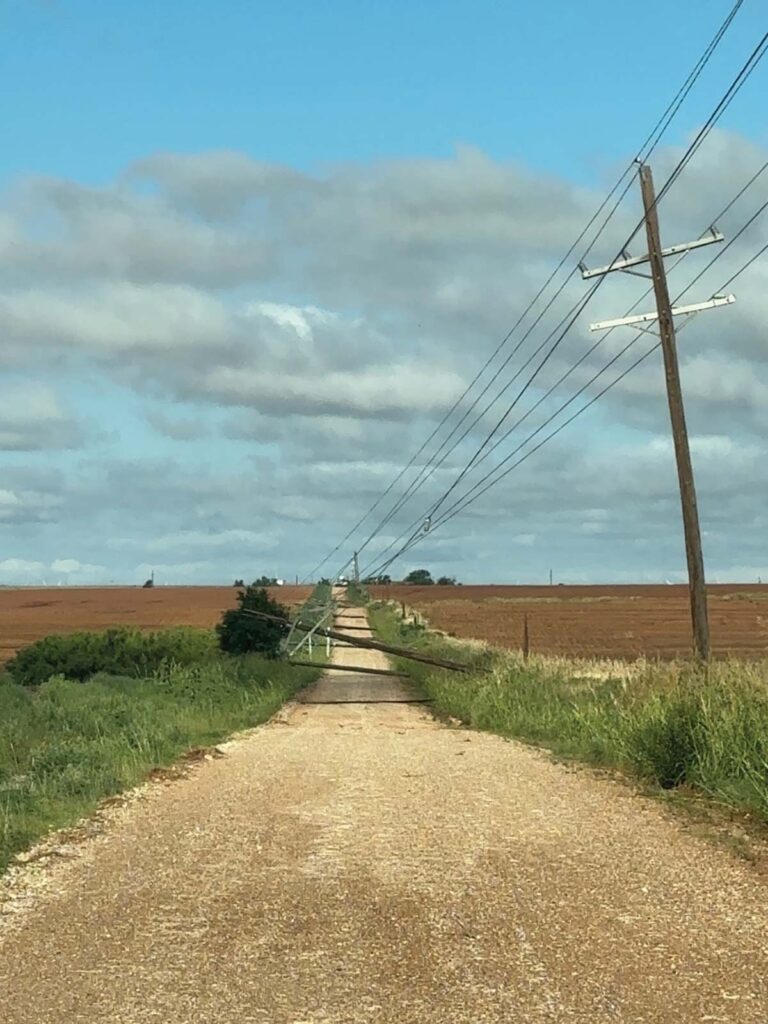
Given the scale of the damage, it didn’t take long Monday to realize we’d need extra help. Our contractor, Primary Utility Services, mobilized additional crews, and our neighbors at Concho Valley Electric Cooperative in San Angelo sent a team to assist.
As conditions improved in Snyder and Stamford, those crews joined the Roby restoration effort. We also continued close coordination with AEP and Oncor, since their transmission line repairs impacted our substation restoration timelines.
By Tuesday morning, our Roby warehouse was buzzing with activity. Crews, bucket trucks, digger derricks and trailers were loaded with materials and sent out with assignments—organized chaos at its finest. That morning, 1,532 meters were still without power. However, that number dropped to 652 by the end of the day.
Wednesday brought more of the same: soaked ground, high humidity and tough working conditions. Even so, crews made steady progress, and by that evening, only 192 meters remained without power.
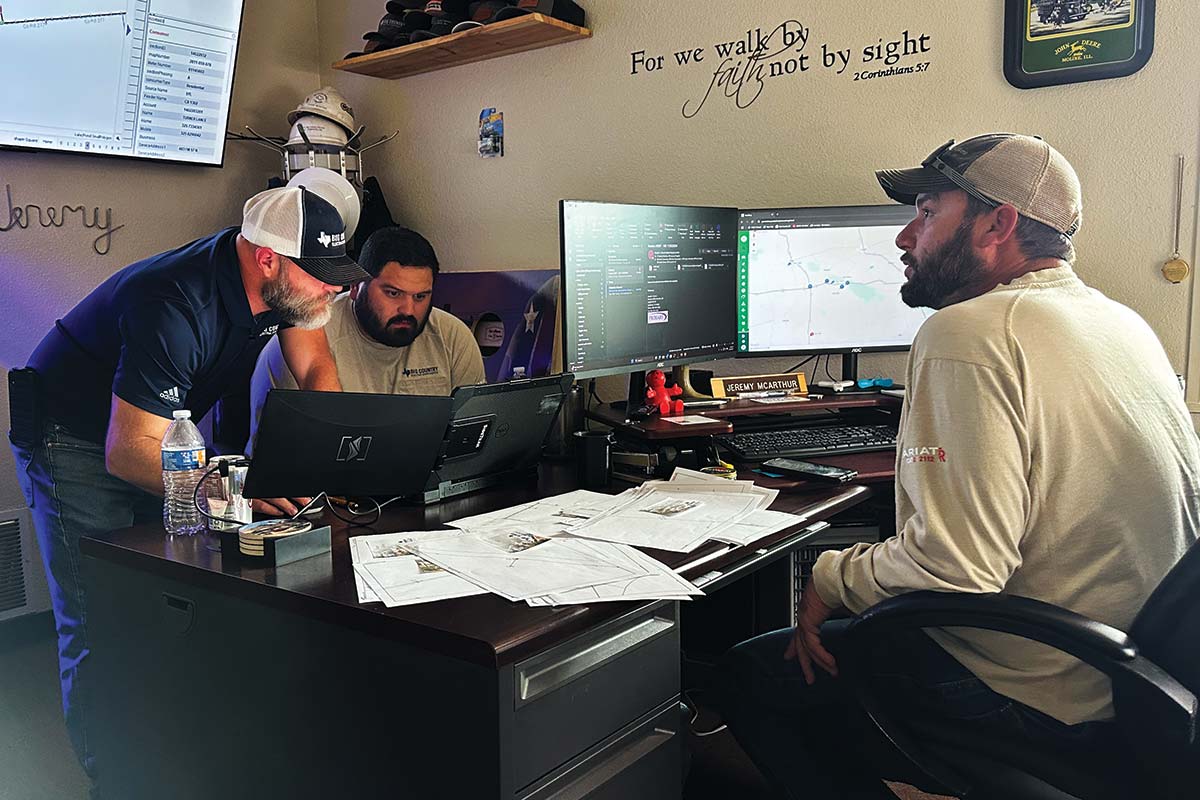
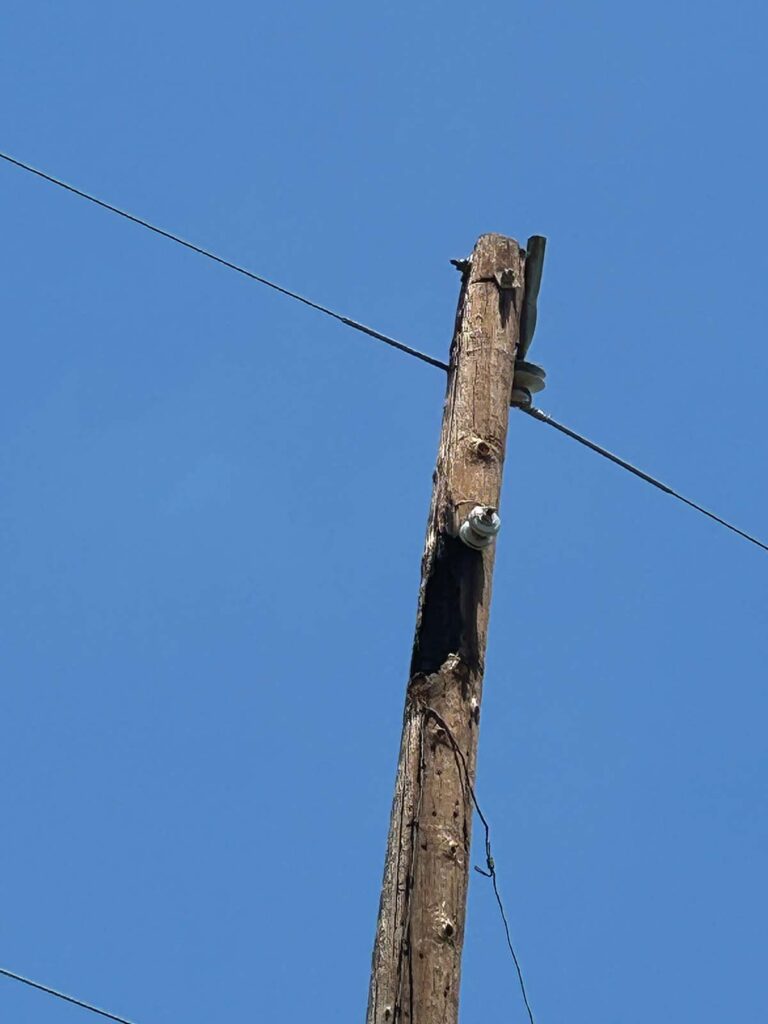
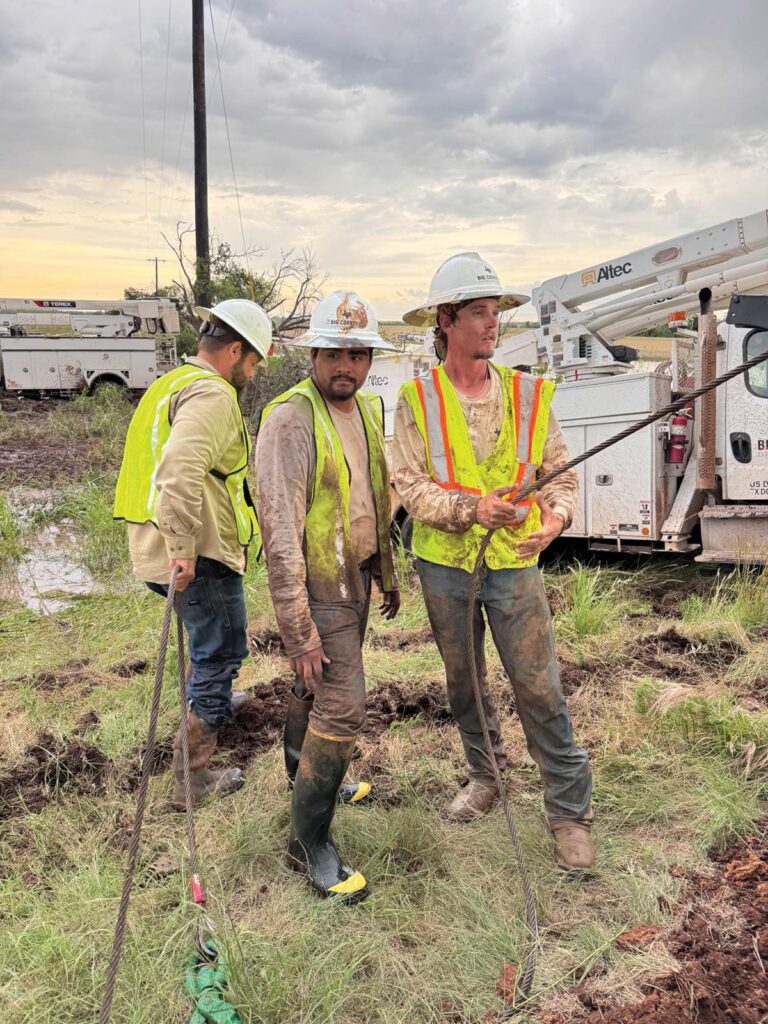
As they continued into Thursday, crews worked some of the more frustrating and flooded areas. Only about 40 meters were officially restored during the day—but Concho Valley EC and Primary crews stayed late into the night, pushing that number up to 85 meters restored.
By Friday morning, only 65 meters remained without power—about half of which were residential. Crews zeroed in on restoring all homes, and by that evening, just 27 meters remained, primarily oilfield, irrigation and water wells.
We officially exited EOP mode and sent crews home for a well-deserved Father’s Day weekend. Roby’s on-call crew remained available for emergency residential outages over the weekend and did respond to a few. Full restoration resumed Monday morning.
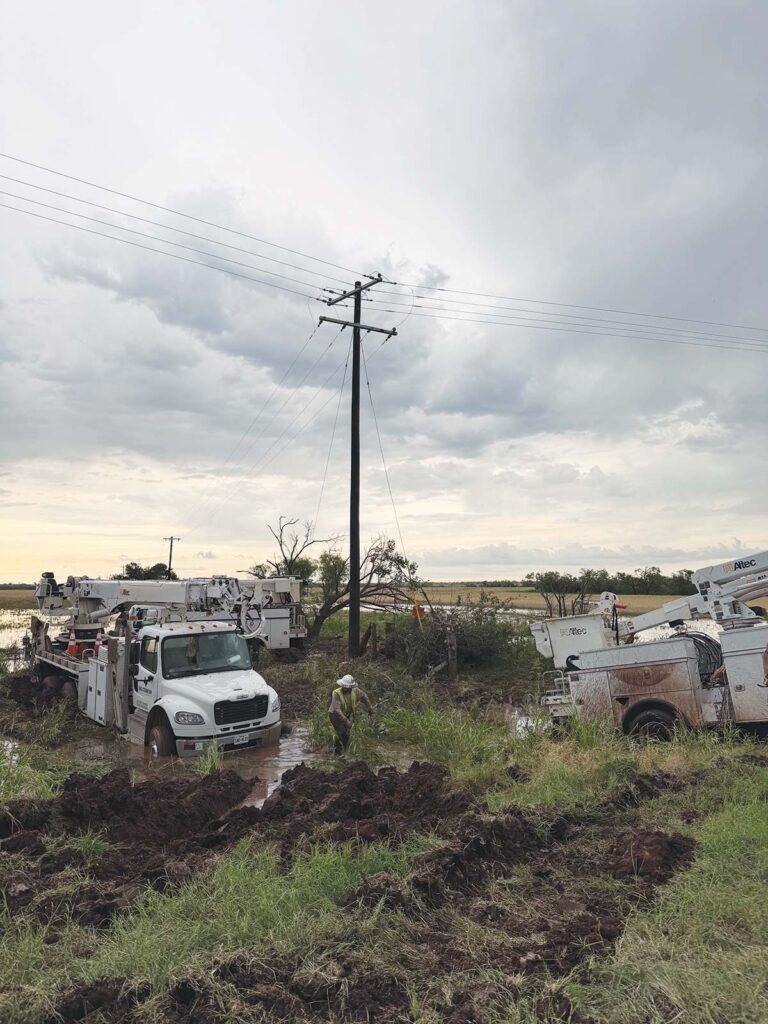
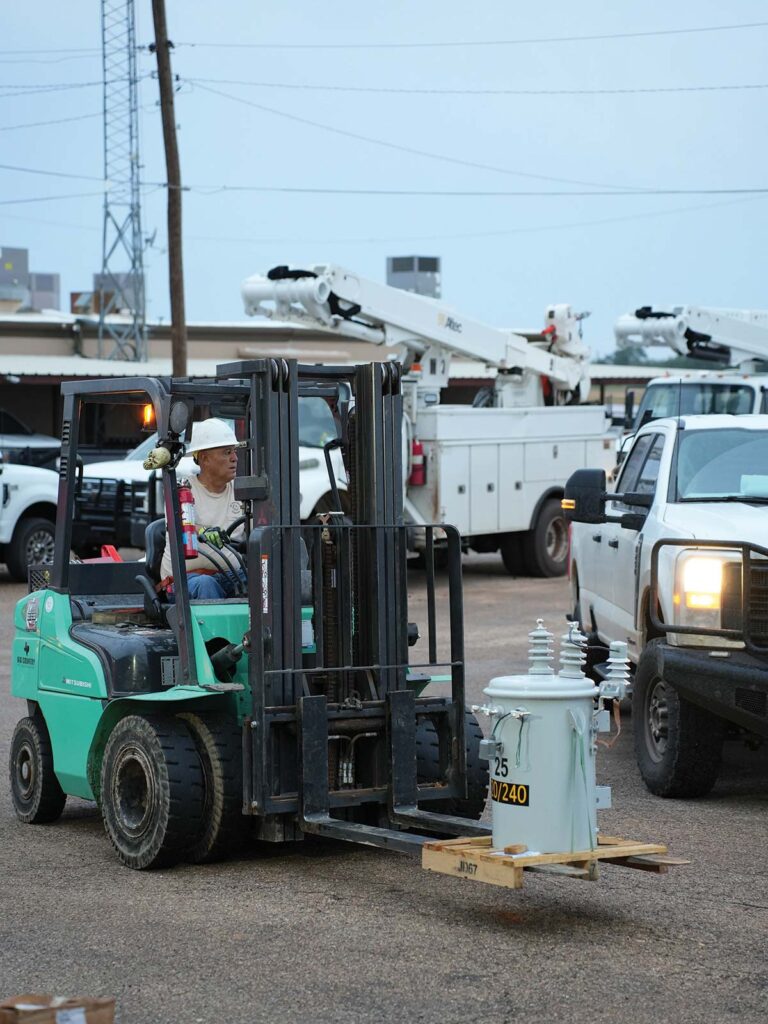
The People Behind the Power
It’s never easy to leave members in the dark—and for some of our employees, that challenge hits especially close to home.
“It’s hard working long hours and knowing your own family is still without power,” said Mason Guerra, BCEC lineworker. “But that’s what we do—we show up for our members, and we don’t stop until the job’s done.
“Although it was very tough working through the mud and the heat, nothing feels better about getting another meter on or driving up and seeing the smiling faces. I speak for all BCEC employees when I say the members mean everything to us, and no matter how big the storm, we will always be there to tackle any task handed to us.”
Guerra worked side by side with fellow lineworkers throughout the restoration efforts, even as his own home remained without electricity for four days. Like many BCEC employees, he’s a member, too, and his story reflects the commitment our team brings to the job, no matter what the circumstances.
Of course, the boots on the ground weren’t the only ones working long hours. While lineworkers were out in the field, our district operations managers, distribution system planning manager, and vice presidents of engineering and operations stepped into dispatcher roles—tracking outages and coordinating with crews.
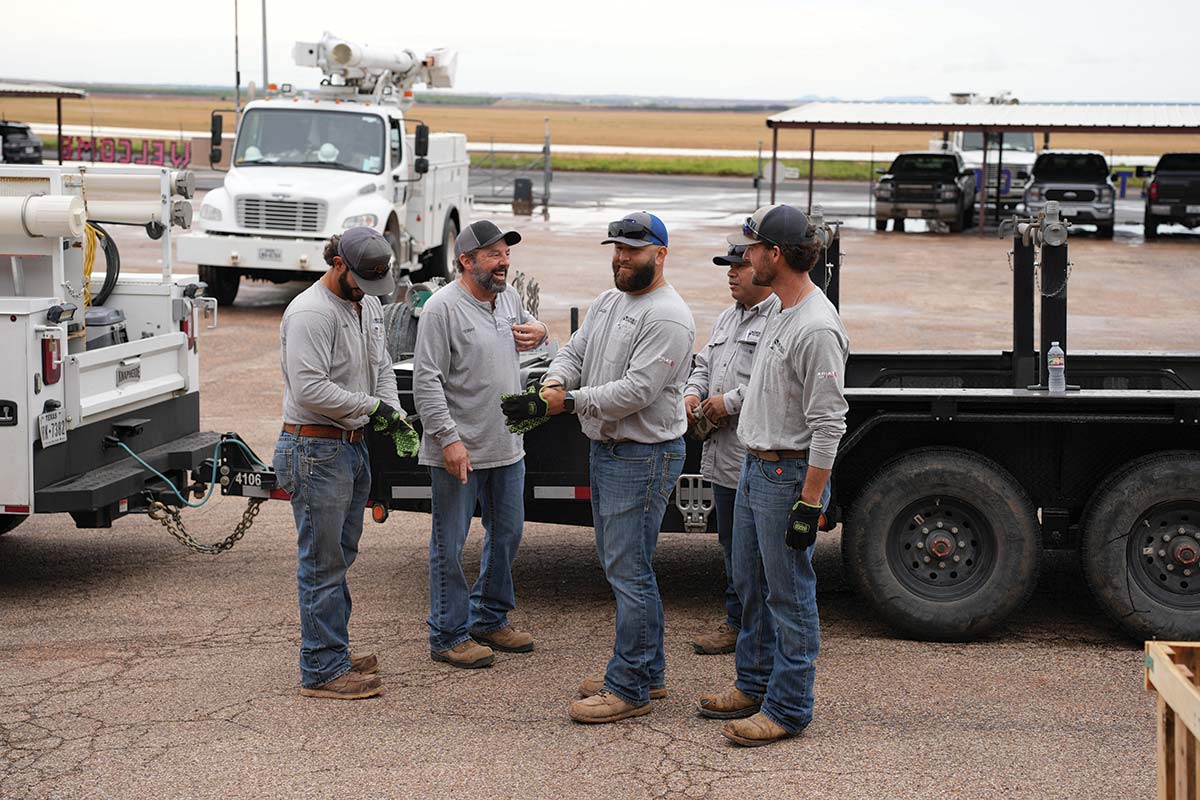
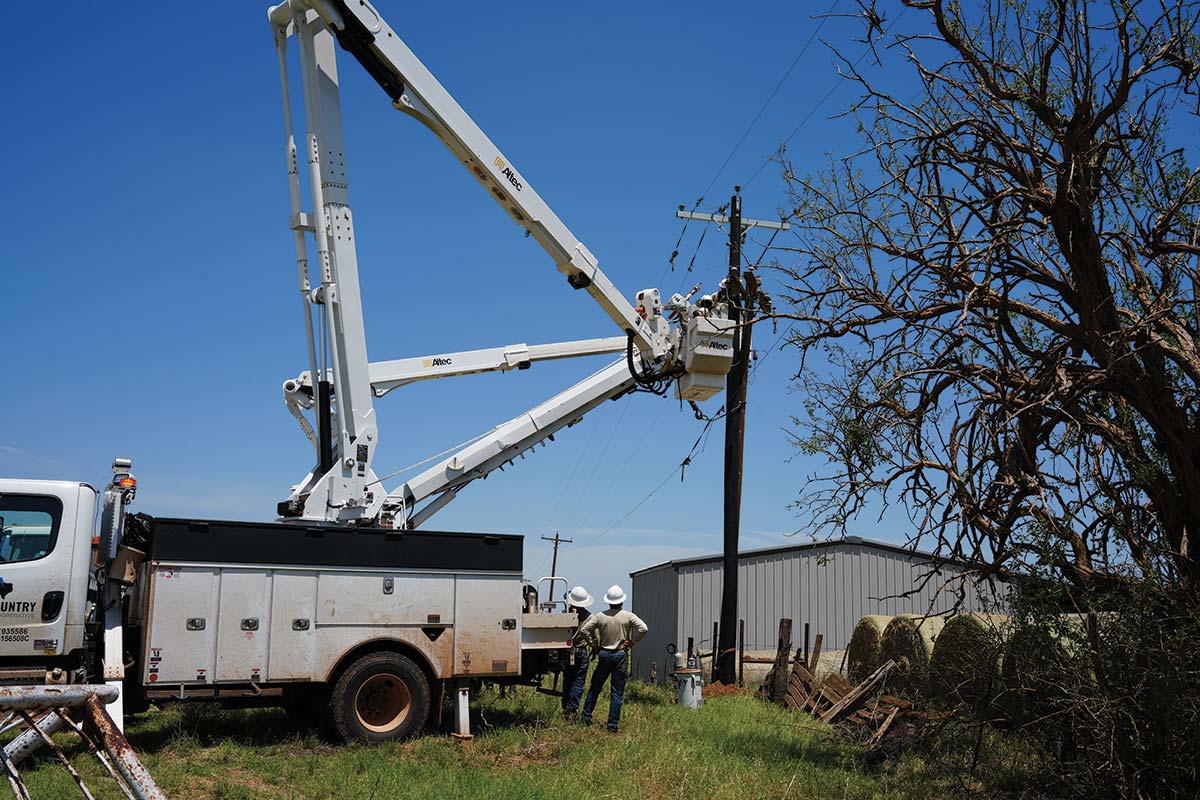
Warehouse staff were ordering materials by the truckload, loading them up and getting trucks out of the yard and into the field. Member service representatives answered calls and provided updates to concerned members. Others made sure there was breakfast and lunch ready for the 80-plus lineworkers working tirelessly to get the lights back on.
It takes a full team—both in the field and behind the scenes—to restore power at this scale. And after the lights come back on, the work doesn’t stop. Our accounting department takes over, sorting through the “storm after the storm” by reconciling materials, labor and costs to close out the event.
Powering Through, Together
We’d be remiss not to thank the many members who stepped in to help—whether it was dropping off doughnuts, helping crews access or get unstuck from muddy rights-of-way, or even repairing a compact track loader attachment or other equipment on the fly. That kind of support means more than you know.
Throughout the week, our members showed incredible patience, encouragement and kindness. We know it’s never easy being without power—especially in the Texas summer—and your understanding kept our team going.
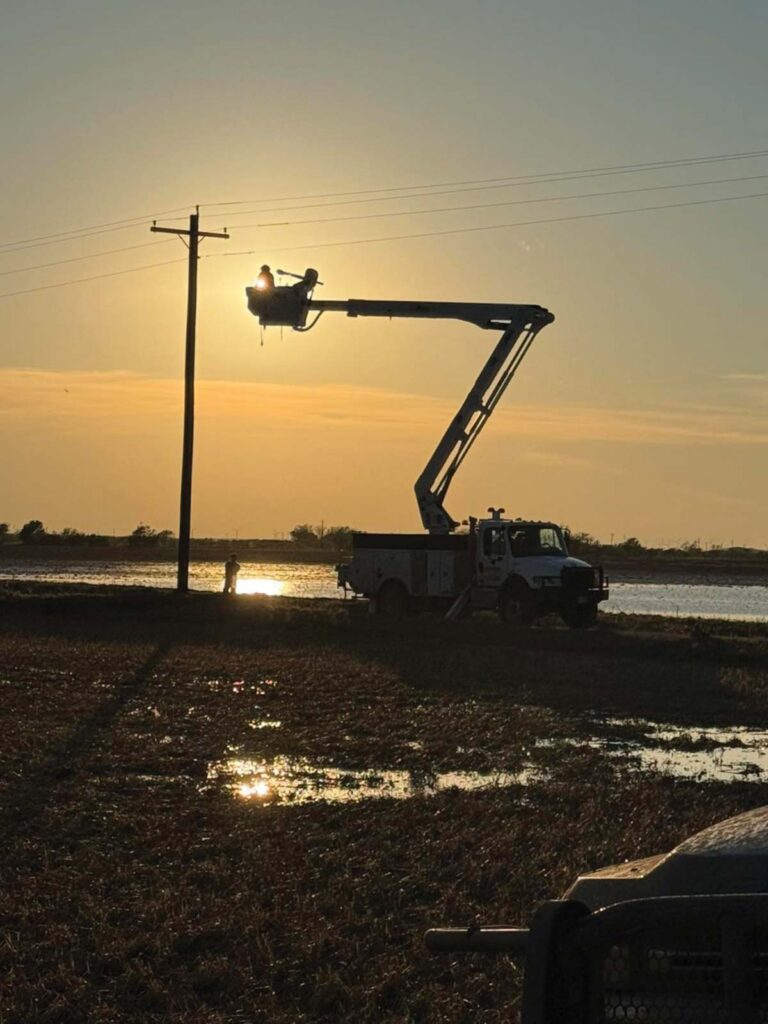
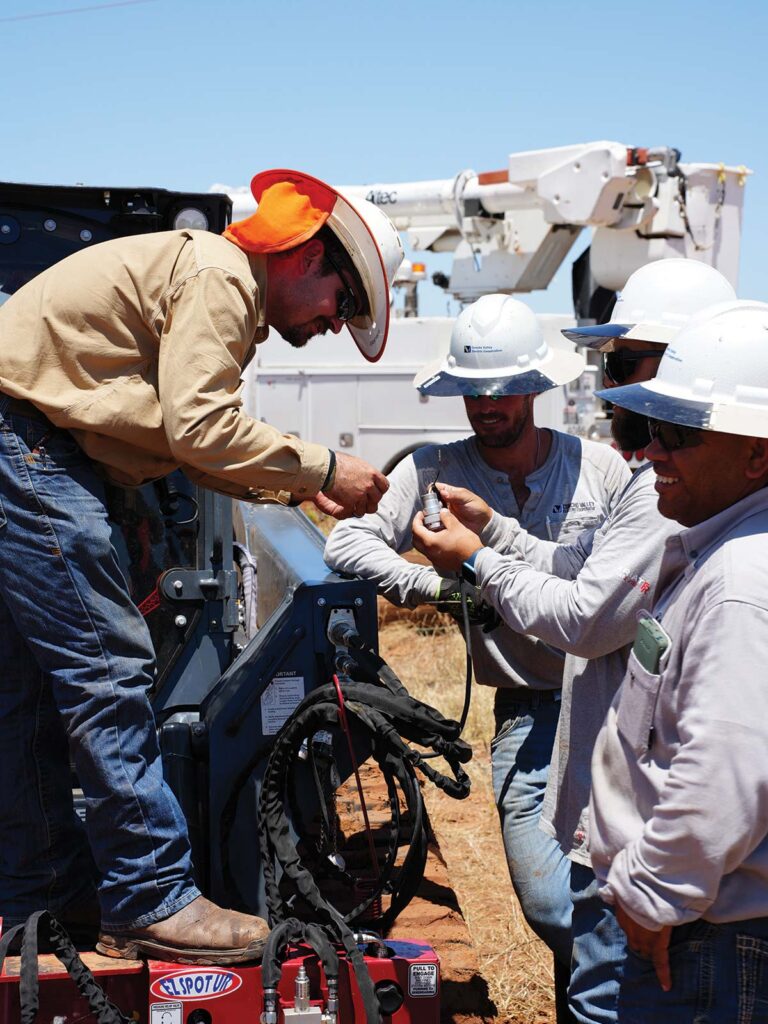
Here are a few things you can do to help us during future storms or outages:
Report your outage through SmartHub or by calling us; it helps us locate and assess damage faster.
Keep your contact information (email and phone) updated so you can receive alerts and restoration updates.
Stay away from downed lines or damaged equipment—always put safety first.
Storm recovery is never easy, but your compassion and community spirit made a tough week a little brighter.
To our line crews, support staff, contracted crews, neighboring co-ops and every member who offered kind words: Thank you for standing with us through the storm. We’re proud to serve you—our neighbors, our members and our community.
